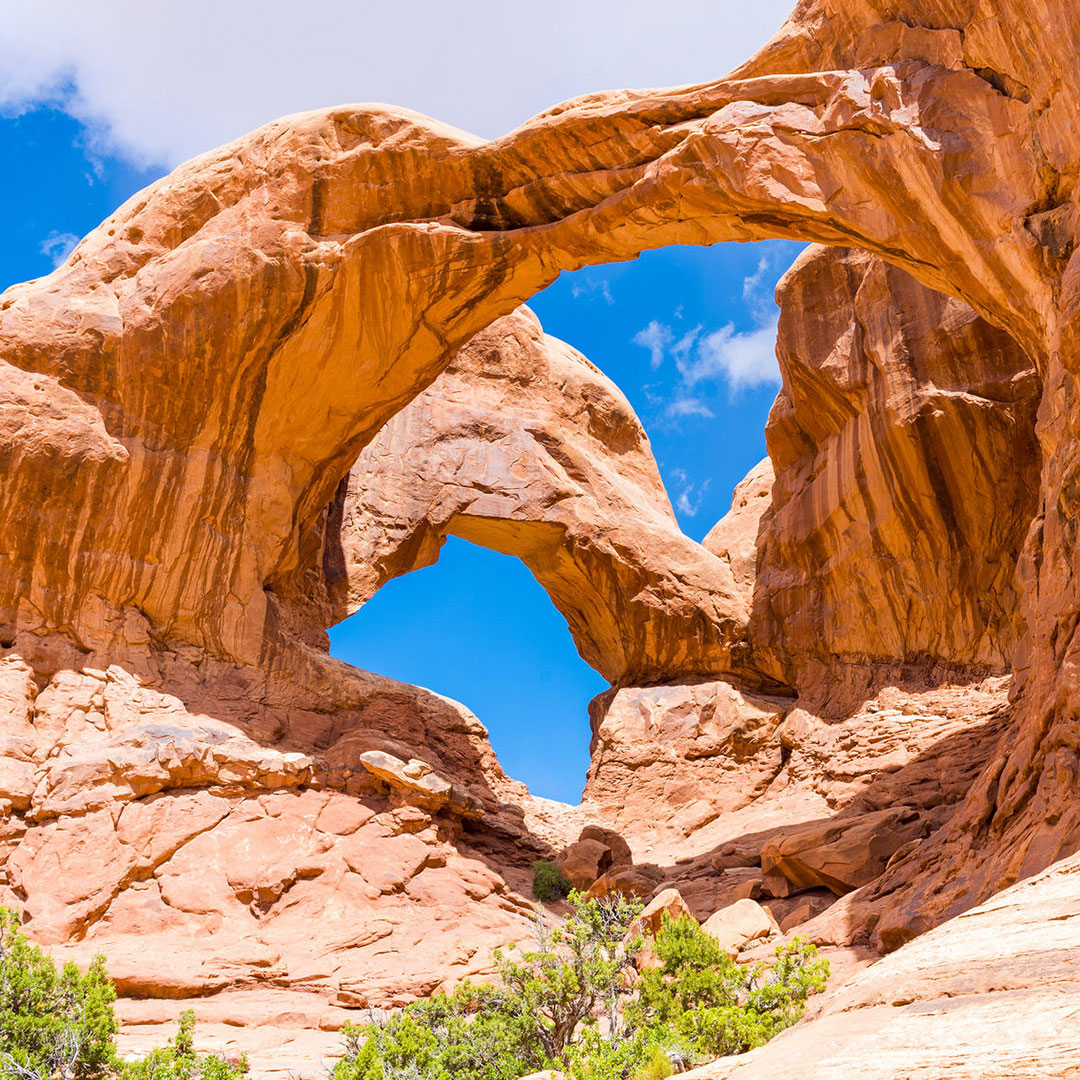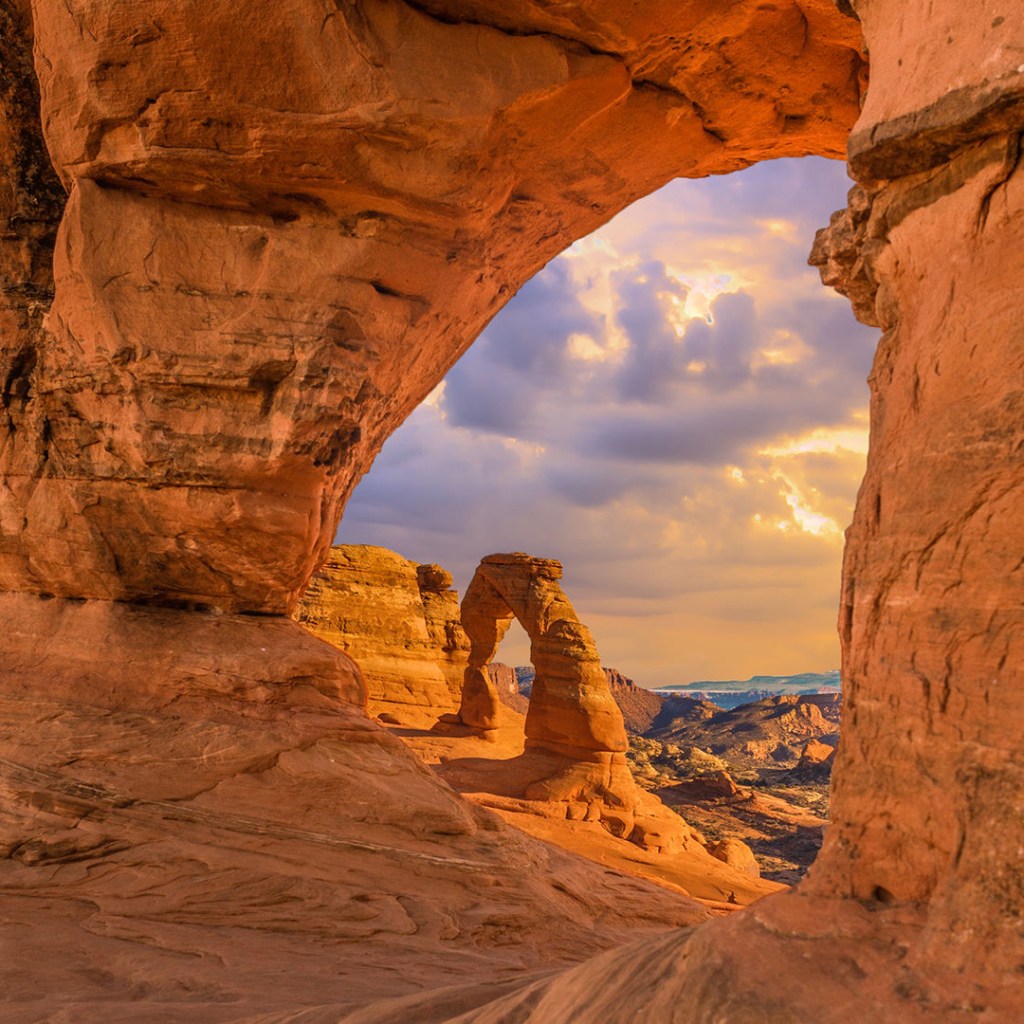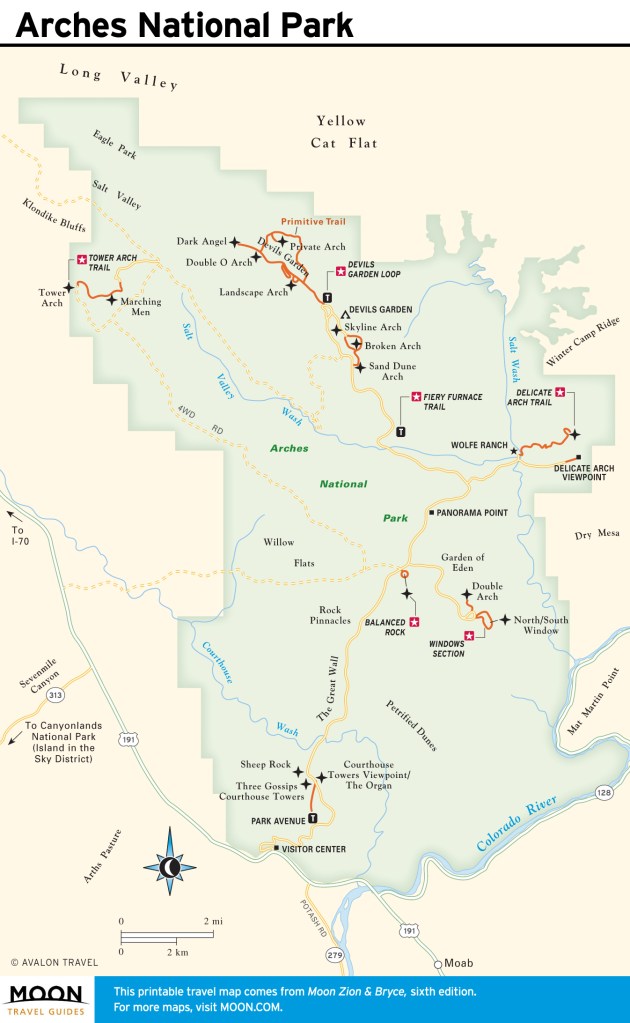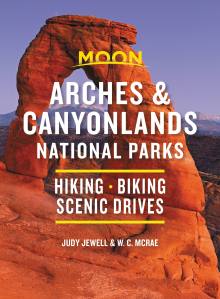How Arches Form in Arches National Park
Arches National Park is aptly named after and famous for its many sandstone arches. As old arches collapse, new arches continuously rise–albeit this is a very, very slow process. But where do those arches come from?

The park’s distinctive arches are formed by an unusual combination of geologic forces. About 300 million years ago, evaporation of inland seas left behind a salt layer more than 3,000 feet thick in the Paradox Basin of this region. Sediments, including those that later became the arches, then covered the salt. Unequal pressures caused the salt to gradually flow upward in places, bending the overlying sediments as well. These upfolds, or anticlines, later collapsed when groundwater dissolved the underlying salt.
The faults and joints caused by the uplift and collapse opened the way for erosion to carve hundreds of freestanding fins. Alternate freezing and thawing action and exfoliation (flaking caused by expansion when water or frost penetrates the rock) continued to peel away more rock until holes formed in some of the fins. Rockfalls within the holes helped enlarge the arches. Nearly all arches in the park eroded out of Entrada sandstone.
Newsletter Signup
By clicking ‘Sign Up,’ I acknowledge that I have read and agree to Hachette Book Group’s Privacy Policy and Terms of Use
Eventually all the present arches will collapse, as Wall Arch did in 2008, but there should be plenty of new ones by the time that happens. The fins’ uniform strength and hard upper surfaces have proved ideal for arch formation. Not every hole in the rock is considered an arch. To qualify, the opening must be at least three feet in one direction, and light must be able to pass through. Although the term windows often refers to openings in large walls of rock, windows and arches are really the same.
Water seeping through the sandstone from above has created a second type of arch—the pothole arch. You may also come across a few natural bridges cut from the rock by perennial water runoff.

Thanks to these same forces, a succession of rock layers is on display at Arches. The rocks on top of the salt beds—the rocks you actually see at Arches—are mostly Entrada sandstone, which is a pretty general category of rock. Within this Entrada Formation are three distinct types of sandstone.
The formation’s dark red base layer is known as the Dewey Bridge member. It’s softer than the formation’s other sandstones and erodes easily. Dewey Bridge rocks are topped by the pinkish-orange Slick Rock member, the park’s most visible rocks. The thin top layer of Entrada sandstone, a white rock similar to Navajo sandstone, is called the Moab Tongue.
The Slick Rock layer is much harder than the Dewey Bridge, and the combination of the two layers—softer rocks overlaid by harder—is responsible for the differential erosion that forms hoodoos and precariously balanced rocks.

Newsletter Signup
By clicking ‘Sign Up,’ I acknowledge that I have read and agree to Hachette Book Group’s Privacy Policy and Terms of Use
Pin ir for Later



